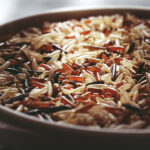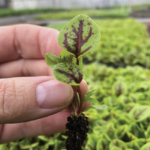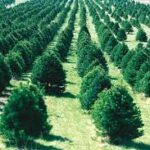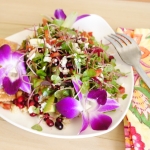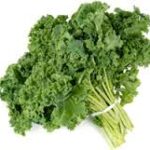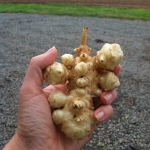News
Blue Moon Acres Featured in Salon.com article: ‘Is rice the “climate-change crop” the Northeast needs?’
Read the full article By Liz Susman Karp
Read More »Blue Moon Acres Featured in Baldor Seasonal Planner: ‘Why We Support Regenerative Farming’
‘An increasing number of [Baldor] farm and rancher partners are focusing on improving soil health—for sustainability of the planet, of the farm industry, and of flavor. Learn what regenerative agriculture is and why it matters to your plate.’ By Mahira Rivers
Read More »More Recycling, Please.
Many of us are old enough to remember the days before recycling bins, when bottles, cans, and plastic all went into the trash, no questions asked. As a nation, we’ve come a long way since then—over 87 percent of us currently have access to curbside recycling programs—but much work remains to be done. In fact,…
Read More »A Little Bit About Christmas Tree Farming
Everybody loves a freshly-cut Christmas tree. The smell, the look, the feel of all that winter greenery, right there in your home. But just what all goes into creating that tree? Christmas tree farming seems like it would be easy, but it’s actually quite time-intensive and laborious. Each Christmas season, between 35 and 40 million…
Read More »The Plight of the Indian Farmer
India’s small farmers are in trouble. A perfect storm of climate change, globalization, and government ineptitude is battering away at what was once the country’s most common occupation. The last two decades have seen an explosion in farmer suicides, as indebtedness, crop failure, and usury leave them hopeless and desperate. The crisis began in 1991,…
Read More »Five Exciting New Ways to Use Microgreens
Everyone knows that microgreens make a great garnish. A handful of micro arugula transforms a boring bowl of Chef Boy-R-Dee into haute cuisine. Add a little micro celery to a Hungry Man Salisbury steak and you’re an instant celebrity chef. Even the lowly peanut butter and jelly sandwich can be made gourmet by a leaf…
Read More »Pumpkin Power!
Halloween just wouldn’t be Halloween without pumpkins. Carved or uncarved, they make great decorations, and even better pies, stews, and soups. Pumpkins also have an interesting and unique history. Pumpkins arrived on the scene between 7,000 and 5,550 BC in Mexico. These early varieties bore more resemblance to gourds or squash than the creased orange…
Read More »Why Do Leaves Change Color?
Autumn is a magical time of year. The cooler weather, the smell of campfire, and the changing leaves. If you have the good fortune to live in the Northeast, the changing foliage can be quite dramatic indeed. But just why do leaves change color? What natural forces are at play here? There are three main…
Read More »Kale: So Much More than Just a Trend
Love it or hate it, kale is huge. Though recent articles tote the end of the kale craze, the reality is that the beloved green remains extremely popular. From its Greek and Roman origins to its modern proliferation, kale is one of the most enduring, healthy, easy-to-grow, and delicious vegetables of all times. And, not…
Read More »No Artichoke Like the Jerusalem Artichoke!
If you’re like me, you were in your mid-thirties before you had the pleasure of eating a Jerusalem artichoke. Also known as sunchokes, sunroots, or earth apples, these tubers are often used in soups, stews, or served roasted as a side dish. Though not as widely known as that other famous tuber, the potato, they’re…
Read More »
